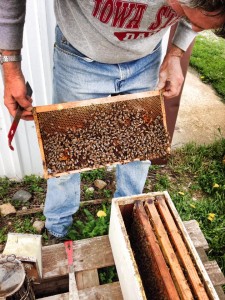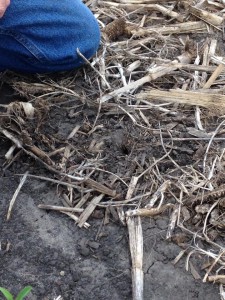Today was a hectic but informative day. Sleeping in was much needed, but unfortunately I think my sugar has been low all day. The first thing we did today was go to a bee keeping farm. Once I got past the initial shock of thousands of bees flying around me (and once I got a mask on), I really enjoyed myself. I had never been around non-wild bees so this was a wholly new experience for me. I learned that it actually takes a lot for bees to sting you since Mark, the beekeeper, was picking them up and moving their hives and even wound up dropping and breaking a comb without ever getting stung. I learned that drones, the male bees, are not very useful so drone larva is not very valuable. They are also, apparently, edible, since everyone in the group ate one but me. I’ve tried a lot of new things on this trip, but I draw the line at eating bugs. This man is incredibly talented, making honey and beeswax art, and I think it is very sad that he can’t support himself doing just that and has to work at a factory as well.
I really enjoyed hearing Mark and his wife’s opinion on GMOs. The described how much the chemicals in pesticides that are genetically modified into these plants affect the bees. It ultimately kills them and doesn’t leave the soil when the plant dies. If it can kill bees in small amounts, what is it doing to the cattle that eats the corn? And, continuing the same train of thought, what is it doing to the people who eat the meat of this cattle? I know that this opinion, and how well they articulated and supported it, has started to change Hedley’s pro-GMO opinion. On the contrary, it has strengthened my budding anti-GMO stance.
After that, we met a farmer named Glen who practices no-till farming. Basically, no-till is an agricultural practice where all of the left over crop from the previous harvests is left on the field, and the seeds are planted into the residue. Glen utilizes strip till practices where the nitrogen-phosphorous-potash are applied in a strip and the seed is planted into this strip. This uses less nutrients than broadcasting them across the field. These practices help prevent soil erosion and hold water in the soil. Glen really sold the practice to us and made it seem like it was almost all positive. After hearing him, I can’t really imagine why more farmers don’t do it. Is it really just because conventional farmers are too stubborn, or is there more that he didn’t tell us? I really want to ask Brent Friest his opinion next time the next time I go visit the horses.



